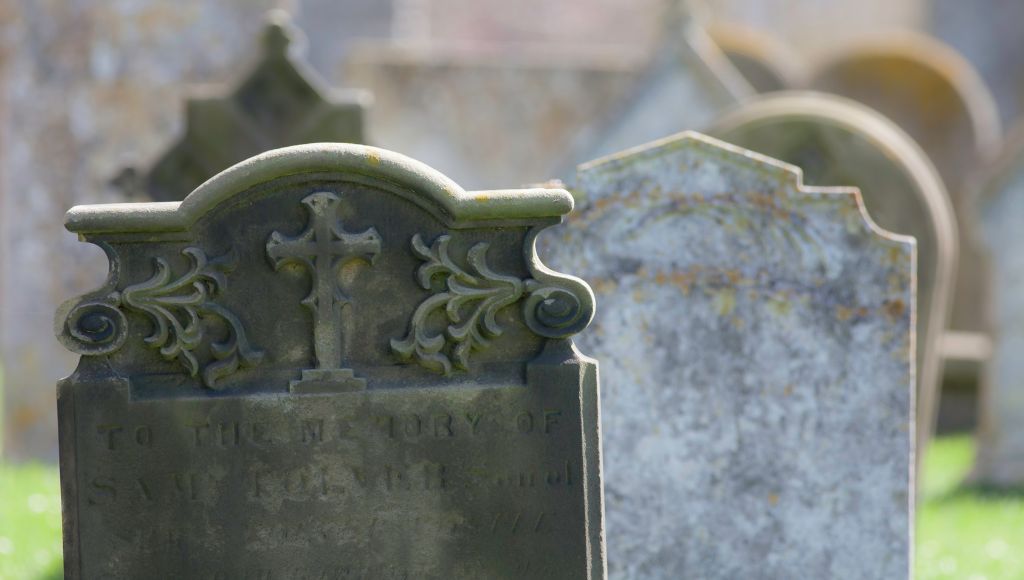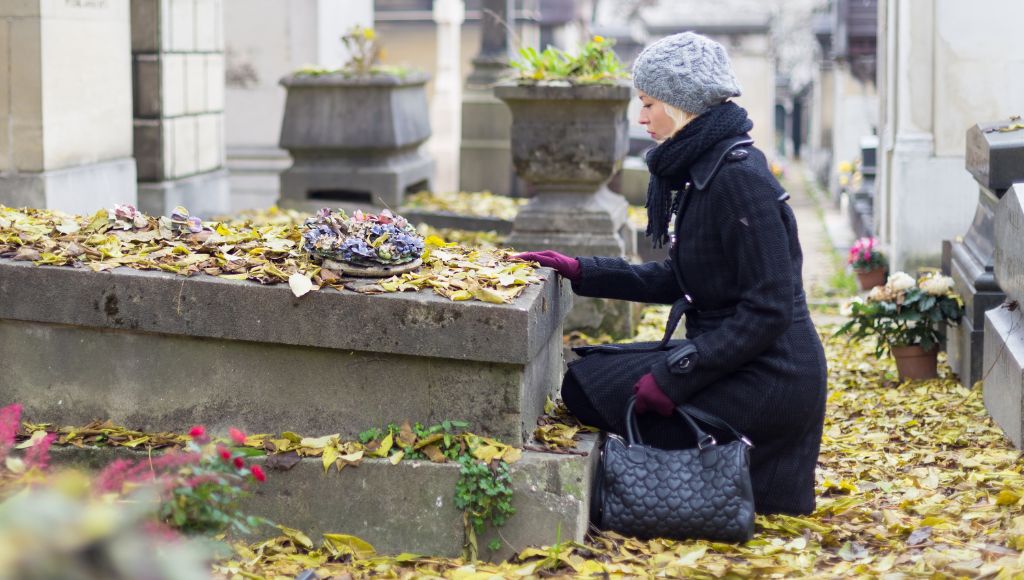Uncovering the gravesites of distant relatives can be a cathartic experience that allows you to connect with your ancestors and receive emotional closure. In recent years, it has become an increasingly popular aspect of heritage tourism as more people seek to uncover their ancestral roots.
Whether you are new to ancestral research or a heritage enthusiast, discovering the exact location of your relative’s final resting place can be a complicated process. Due to everything from common surnames to lost documents, information can become misconstrued. Therefore, before starting your investigation, it is important to know the best methods that are currently available.
Coming your way in this post - click to expand ->
8 tips on how to find where someone is buried
There are several different methods through which you can discover the location of your ancestor’s grave. Utilizing a combination of these resources will yield the most accurate results.
Use online cemetery search engines to find a gravesite for your ancestor
If you have basic information about your ancestor, such as their full name, date of birth and death, then online cemetery records could quickly provide you with some answers. There are countless different cemetery databases available online that cover different regions of local cemetery around the world.
Entering basic details about your ancestor into the search engine can quickly direct you toward the exact location of their gravestone. However, it is important to remember that you may need to consult additional resources to determine if you have found the correct grave.

Collect vital information to find a person’s grave
While basic personal details can certainly yield results, the best way to ensure that you can locate the right grave is to compile as much information as possible about your relative.
Details such as where they resided, the place of worship they attended, and where they worked can help you narrow your search to a specific region. By collecting this information, you reduce the possibility of uncovering false results. These details can be found in historical documents such as census records and obituaries.
Use google searches for cemetery information
If you know where your relative lived, doing some research into the cemeteries managed in the local area can help you eliminate particular cemeteries as potential gravesites.
Some graveyards will have stopped burying people after all plots were occupied, meaning that if your ancestor died at a later date, they will not be in that cemetery. Furthermore, if a graveyard is attached to a place of worship, it is possible that they only buried members of their denomination there.
Contact the county or funeral homes
All death certificates are issued by the county and are subsequently used by funeral homes. As such, these institutions have detailed records about all the deceased people in the local area. A death certificate is considered a public record and, therefore, is available for anyone to access. You do not have to prove your connection to the deceased to see the certificate.
Funeral homes will also keep records of the funeral services they provide, so contacting funeral homes in your relative’s place of residence can be hugely beneficial. It is important to remember, however, that if you are searching for the grave of a family member who died several generations ago, the funeral home responsible for their burial may no longer be active or keep records from that time period.

Family records
By simply talking to your living family members, you may be able to discover crucial pieces of information about the burial place of your ancestor. Vital records, such as a family tree or a collection of family bibles, can make your daunting task far simpler. Both bibles and family trees can include the birth and death dates of your relatives which will help narrow the search.
Additionally, your family may have previously had access to a privately owned plot reserved for your relatives which would significantly reduce the scope of your search.
Church records
If you know your relative followed a certain religion, the place of worship in their residence may house records relating to their burial and funeral service. Unlike funeral homes which regularly close down, places of worship, such as churches, often have a long history that is protected and documented by dedicated members of the community.
Local historical and genealogical societies
Regardless of the location and population size of your family member’s place of residence, there is likely to be a group dedicated to the history of the area. These historical groups will have cultivated numerous records about the local area throughout time, including death records. Often, they have websites dedicated to their research, on which they add photos and regularly upload newly discovered information.
Death-related records to help you locate a grave
There are numerous documents that relate to a person’s grave. Compiling these records gives you the best chance of locating the correct grave marker because they can include various details that you can cross-reference with other documents.
- Death certificate
Death certificates contain far more information than just the date of death. The certificate will detail the individual’s place of death, age, occupation, cause of death, and residence. Additionally, the name of the relation notifying the authorities of the death will be listed. - Obituaries
Obituaries can be an equally valuable resource. While the primary focus is to announce a death, an obituary can also offer details about a person’s life, such as significant achievements, surviving relations, and, crucially, their final place of rest. Photos are often included as well. - Social Security Death Index
This index includes deaths that were reported to the Social Security Administration between 1932 and 2005. If you have access to your family member’s social security number, you can enter it into the database. This will provide you with their registered place of death, however, it is important to remember that this location refers to their last registered residence, rather than their grave. - Cemetery research
Depending on the age of the cemetery, there may be limited surviving information about it. By researching several cemeteries in your ancestor’s area of residence, you can gradually pinpoint the most likely location of their grave. - Funeral records
There are several different documents that can include details of the funeral. Uncovering a receipt of payment to a funeral home or the memorial card created for the funeral can be hugely beneficial and lead you to further sources of information.

Analyze the evidence to confirm the ancestor’s identity and date of death
Locating the grave of an ancestor can be an incredibly emotional experience that strengthens your connection to the past. As such, you want to ensure that the information you have collected is accurate and that you are visiting the correct cemetery.
This genealogy research can be complicated and time-consuming as you track down a vital record or travel to a new city to locate specific archives, but committing to this research provides the best chance of uncovering the exact location of a relative’s burial.
The more research you do, the easier it will be to eliminate false results. In most cases, there will be multiple graves across different cemeteries that bear the same name. Without information such as a death or birth date, it can be difficult to identify which grave actually belongs to your ancestor.
Tips for requesting information before reaching out
Before contacting the county clerk’s office or reaching out to a public archive, ensure that you have gathered as much information as you can independently. The more detail you can provide, the more likely it is that someone will be able to track down the correct documents for you. Ideally, you need to know at least the last names of your family members, and the date of their passing.
While documents such as birth and death certificates are free to access, if you are struggling to locate one, there are several different companies you can pay to assist in your search. Certain archives also require payment to access them due to the rarity of their contents.
Visiting the gravesite in person
When you have located the correct grave, you can finally visit and pay your respects. Depending on where it is, visiting may be as simple as driving to a nearby city or you may need to incorporate it into a heritage vacation abroad.
The age of the grave markers largely affects their legibility, so it may take some time to find the correct grave. Once you have, you can pay your respects in whatever manner feels appropriate to you, such as saying a prayer or laying flowers on the grave.
If you would like to visit the grave again, taking a photograph of it as well as saving all your research ensures that you will not have to go through such a lengthy process to find it again.

FAQs
Are burial locations public record?
Local councils will keep indexes of their burial records. If you would like a copy of the original burial record, you may have to pay a fee.
How do you find unknown graves?
Unmarked graves can be difficult to locate, but it is not impossible. Specialist equipment, such as a ground penetrating radar, can detect buried remains.
How can I find out where my family is buried?
There are countless online databases that are regularly updated with newly discovered graves. Entering your ancestor’s details into one of these databases is one of the easiest ways to find out where they are buried.
Who keeps records of where people are buried?
There are several different institutions that house burial records, including cemeteries, churches, and county offices.
How helpful is a death certificate?
A death certificate can provide huge amounts of vital information because it includes an individual’s age, place of death, and occupation.
Final thoughts on How to Find Where Someone is Buried
Figuring out how to find the graves of your family members can appear overwhelming and confusing, however by adopting a methodical approach, you can discover numerous details about your relative in addition to finally being able to pay your respects.
The genealogy puzzle that comprises your family tree can be incredibly rewarding to solve as you strengthen your connection to previous generations of your family and keep their memory alive.
